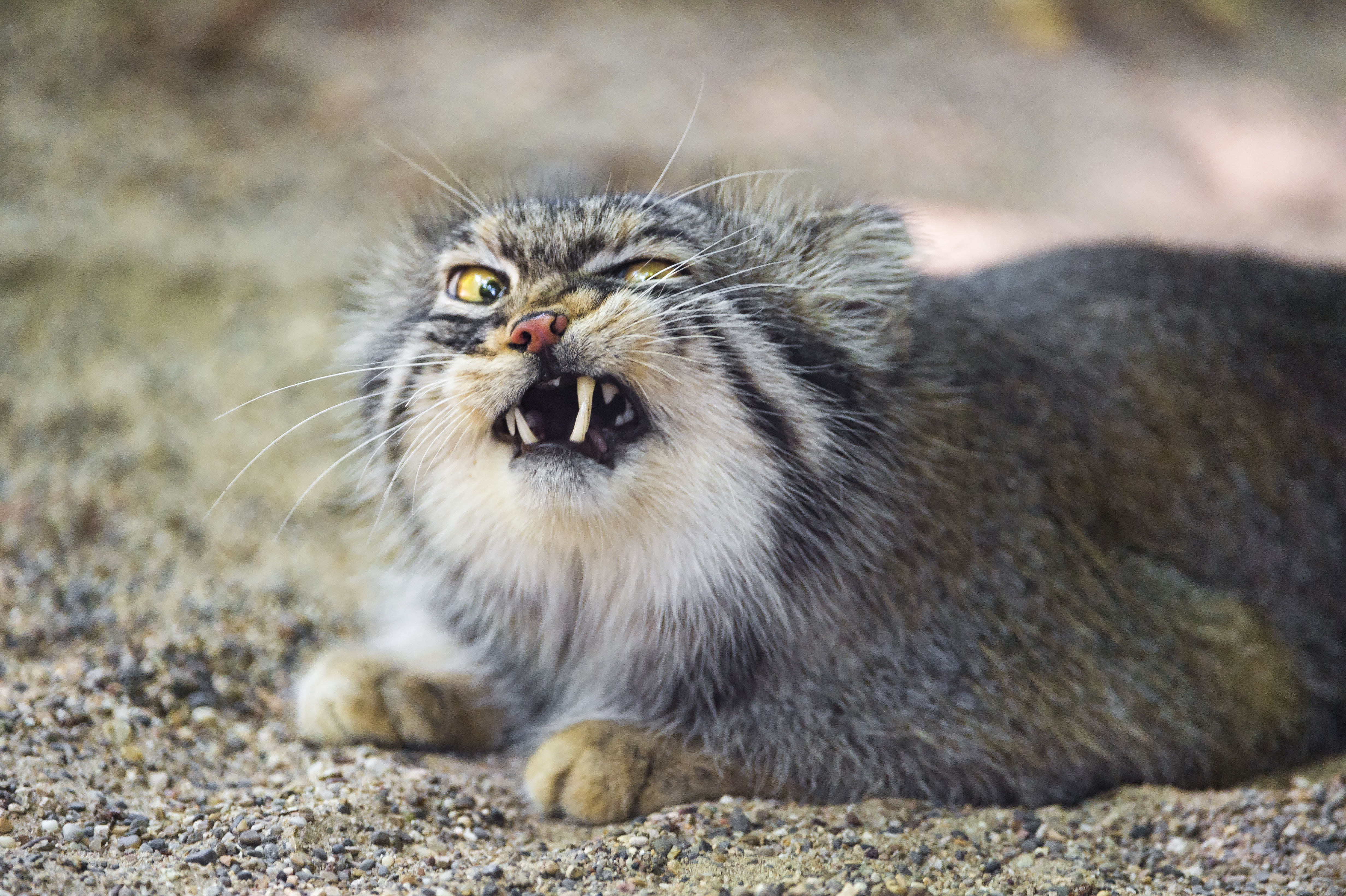
It is officially March, and what better way to celebrate than an adorable animal: Pallas’ cat.
Pallas’ cats (Otocolobus manul) are small cats that live in rocky, dry regions throughout Central Asia. They get their name from the German zoologist Peter Simon Pallas, who first described them in 1776.
Pallas’ cats look just like domestic cats – they’re the same size and shape. In fact, early naturalists thought that Pallas’ cats were the wild ancestors of the domestic Persian cat because they looked so similar. Spoiler alert: they were wrong. Pallas’ cats are NOT ancestors of Persian cats!
All fluff
Pallas’ cats may look chonky, but I promise, it’s all fluff! Although they have the longest and densest fur in the cat world, Pallas’ cats weigh about the same as domestic cats (between 4 and 11 pounds).
This fluffy coat is crucial in keeping a Pallas’ cat warm in the cold and windswept environments where they live. For example, the undercoat on their belly is twice as long as the rest of their fur; this could help protect the cats from the cold as they lie and crouch on the ground.
Their fluffy tails also play a role in staying warm. Pallas’ cats can wrap their thick tails around their body for additional heat. They may also stand on their tail to keep their paws from getting too chilled.
Cute little face
Perhaps the most noticeable feature of a Pallas’ cat’s face is its ears; in fact, its scientific name Otocolobus means “ugly-eared.” These ears are small and covered with fur. Small ears mean that a Pallas’ cat will lose less body heat in the cold than if it had large ears. Their ears are also low on their face.
In addition to their low-set ears, Pallas’ cats also have eyes that are relatively high on their head. These features (low-set ears and high-set eyes) could let a Pallas’ cat peak over a rocky ledge without being spotted by potential prey or other predators.
Finally, the eyes of a Pallas’ cat are different from domestic cats. Instead of vertical, slit-shaped pupils, their eyes have round pupils.

Pika pika
Although Pallas’ cats eat all sorts of small animals, more than 50% of their diet consists of pikas, a small, mountain-dwelling mammal. [Note: unlike Pikachu (who is, of course, an electric mouse), pikas are related to rabbits.] Pallas’ cats spend much of their time stalking pikas to eat.
Pallas’ cats have short legs, so they can’t run very fast; instead, they rely on ambushing their prey. This is where small ears and high-set eyes come in handy – in a behavior known as ‘periscoping,’ the cat peer over a ledge without exposing itself.
When they aren’t actively stalking prey, Pallas’ cats may wait outside rodent burrows until their target exposes themselves. A particularly hungry Pallas’ cat may even try sticking their paw in the burrow to scoop out a tasty rodent snack.
On top of the world
A recent report in the winter 2022 issue of Cat News announced an exciting discovery: Pallas’ cats live on Mt. Everest.
Researchers in the 2019 National Geographic and Rolex Perpetual Planet Everest Expedition collected scat samples that confirmed two Pallas’ cats made their home on the tallest mountain on Earth.
Why is the news of just two cats such a big deal? There are a couple of reasons. First, this discovery extends the range of Pallas’ cats to eastern Nepal.
Second, Pallas’ cats are very secretive (and they live in harsh, remote places), so we only know a little about their behavior. Any information we get about this species is exciting and valuable.
Given the rarity of Pallas’ cats, you’re likely to miss seeing one in the wild. We honestly don’t really know how many Pallas’ cats exist in the world today, but estimates put their population at just 58,000.
But don’t worry – there are plenty of cute videos of Pallas’ cats where you can get your cuteness fix.

Resources
Smithsonian’s National Zoo & Conservation Biology Institute

Leave a Reply